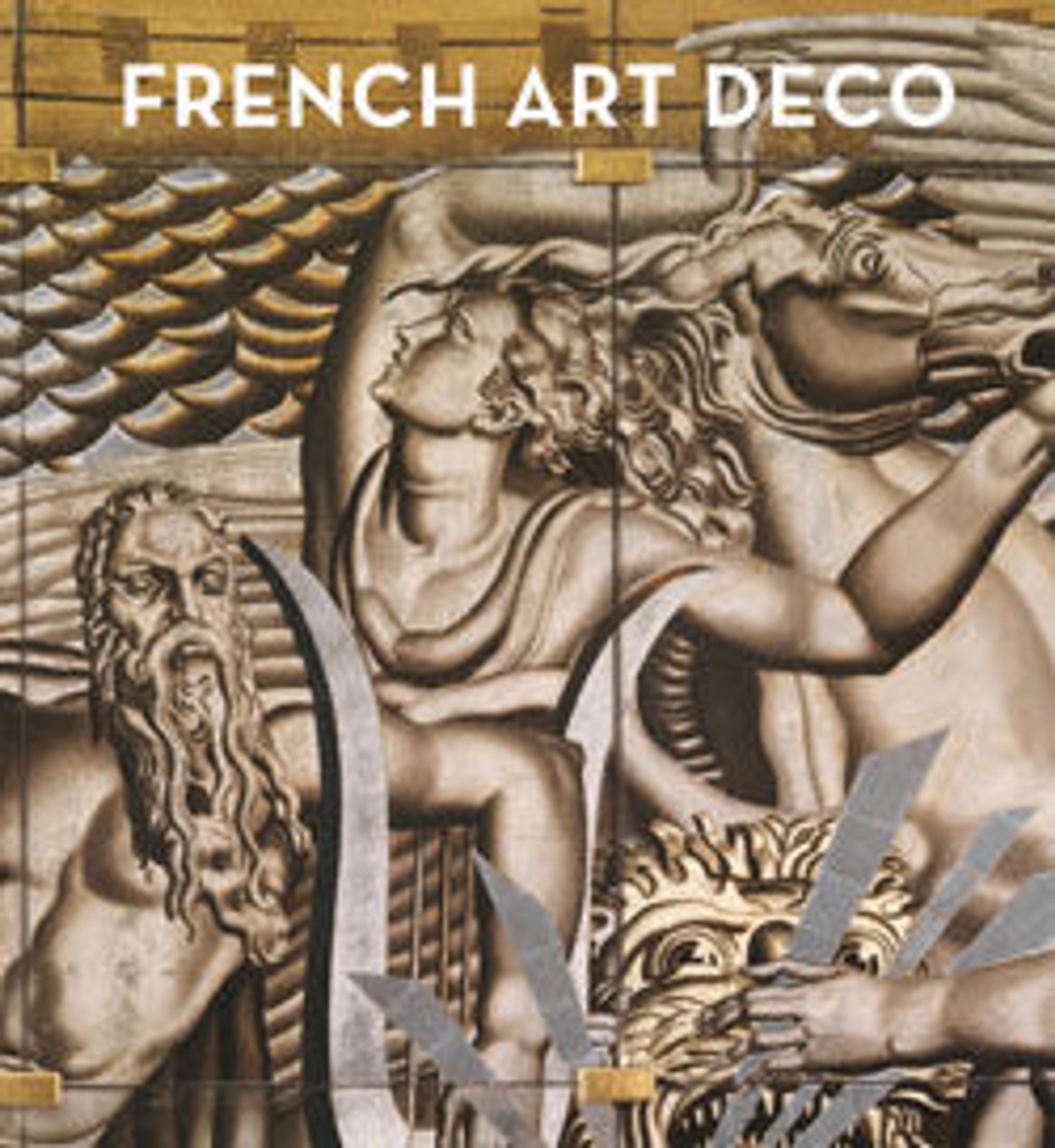Armchair (Normandie)
The noted architect Patout, together with Henri Pacon, was responsible for the layout and decoration of a number of the first-class public spaces on the liner, including the vast dining room, which was more than 300 feet long and 28 feet high and could seat 700 people at 150 tables. The room occupied an interior space with no windows, so Patout and Pacon made up for the lack of natural light by covering the walls with thick slabs of reflective, translucent glass that created a spatially ambiguous atmosphere. The walls were punctuated with ranks of tall columnar lamps, and twelve illuminated glass “fountains” by René-Jules Lalique further contributed to the cool glamour of the room.
This pair of armchairs is from the room’s suite of seating furniture; the machine-woven upholstery incorporates a red shield with two lions passant—a heraldic device symbolizing the French province of Normandie, for which the liner was named and where her home port, Le Havre, is located. Underneath each seat was a mechanism used to anchor the chair to the floor when seas were rough.
This pair of armchairs is from the room’s suite of seating furniture; the machine-woven upholstery incorporates a red shield with two lions passant—a heraldic device symbolizing the French province of Normandie, for which the liner was named and where her home port, Le Havre, is located. Underneath each seat was a mechanism used to anchor the chair to the floor when seas were rough.
Artwork Details
- Title: Armchair (Normandie)
- Designer: Pierre Patout (French, Tonnerre 1879–1965 Reuil)
- Date: 1934
- Medium: Mahogany, gilt bronze, wool upholstery
- Dimensions: H. 34-1/2, W. 22-1/4, D. 20 inches (87.6 x 56.5 x 50.8 cm.)
- Classification: Woodwork-Furniture
- Credit Line: Gift of Dr. and Mrs. Irwin R. Berman, 1976
- Object Number: 1976.414.2
- Curatorial Department: Modern and Contemporary Art
More Artwork
Research Resources
The Met provides unparalleled resources for research and welcomes an international community of students and scholars. The Met's Open Access API is where creators and researchers can connect to the The Met collection. Open Access data and public domain images are available for unrestricted commercial and noncommercial use without permission or fee.
To request images under copyright and other restrictions, please use this Image Request form.
Feedback
We continue to research and examine historical and cultural context for objects in The Met collection. If you have comments or questions about this object record, please contact us using the form below. The Museum looks forward to receiving your comments.
